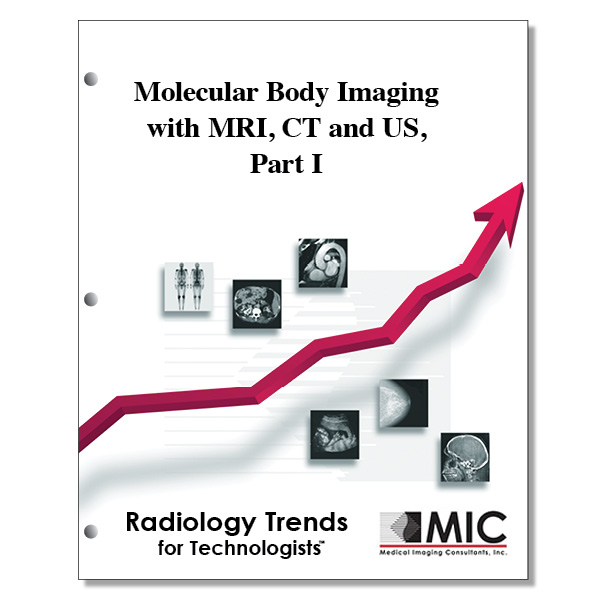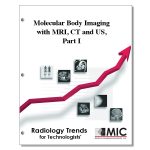

Molecular Body Imaging with MRI, CT and US, Part I
Principles of molecular imaging are presented using emerging technologies in MRI, CT, and US.
Course ID: Q00340 Category: Radiology Trends for Technologists Modalities: CT, MRI, Radiation Therapy, Sonography2.75 |
Satisfaction Guarantee |
$29.00
- Targeted CE
- Outline
- Objectives
Targeted CE per ARRT’s Discipline, Category, and Subcategory classification:
[Note: Discipline-specific Targeted CE credits may be less than the total Category A credits approved for this course.]
Computed Tomography: 0.25
Patient Care: 0.25
Patient Interactions and Management: 0.25
Magnetic Resonance Imaging: 0.75
Patient Care: 0.75
Patient Interactions and Management: 0.75
Nuclear Medicine Technology: 0.25
Patient Care: 0.25
Patient Interactions and Management: 0.25
Registered Radiologist Assistant: 0.25
Patient Care: 0.25
Pharmacology: 0.25
Sonography: 0.25
Patient Care: 0.25
Patient Interactions and Management: 0.25
Outline
- Introduction
- Molecular MR Imaging
- Principles of MR Contrast Agents
- T2 and T1 Contrast Agents
- Contrast Agents Based on Fluorine 19
- Chemical Exchange Saturation Transfer Agents
- Activatable MR Contrast Agents
- Multimodality Probes
- Hyperpolarization
- Molecular CT Imaging
- Principles of Molecular CT Contrast Agents
- Molecular US Imaging
- Principles of Molecular US Contrast Agents
- Quantification of Molecular US Imaging Signal By Using US Contrast Microbubbles
Objectives
Upon completion of this course, students will:
- understand the drawbacks of PET imaging
- recognize the imaging modalities that currently provide anatomic information
- recognize the imaging modalities that provide the highest contrast sensitivity
- understand the effects of a T1 MRI contrast agent
- recognize examples of superparamagnetic iron oxide nanoparticles
- understand the process of iron oxide nanoparticle filtration and excretion
- be familiar with the characteristics of ultrasmall superparamagnetic iron oxide particles
- be familiar with the characteristics of gadolinium
- recognize the characteristics of new gadolinium-containing molecular MR agents
- be familiar with the elemental targets of MR imaging
- understand the benefits and drawbacks of MR imaging with fluorine-19
- be familiar with intrinsic tissue properties highlighted by contrast-enhanced MR imaging
- know the components of targeted PARACEST MR agents
- define the concept of multiplexing
- understand the fundamentals of activatable MR contrast agents
- know the terminology of activatable MR contrast agents
- understand the effects of magnetic relaxation switching
- recognize the benefits of MRI as a basis for multimodality probes
- differentiate the use of radioactive and non-radioactive gases
- recognize the benefits of hyperpolarization
- understand the basics of nuclear magnetic alignment
- recognize the benefits of CT imaging
- understand the requirements of CT contrast agents
- recognize the drawbacks of current non-targeted CT contrast agents
- distinguish the components of molecular CT agents from other modalities
- identify the characteristics of a bismuth sulfide molecular CT agent
- recognize the benefits of US imaging
- compare the benefit of a targeted US agent over a non-targeted agent
- understand the physical principles of imaging US microbubbles
- be familiar with the characteristics of non-microbubble ultrasound contrast agents
- understand the metabolic and excretory pathway of an ultrasound microbubble
- understand the concentrations of current non-targeted ultrasound microbubbles
- identify current uses of non-targeted ultrasound microbubbles
- recognize the features of absolute quantitative ultrasound analysis
- identify the modalities that employ semiquantitative analysis techniques
